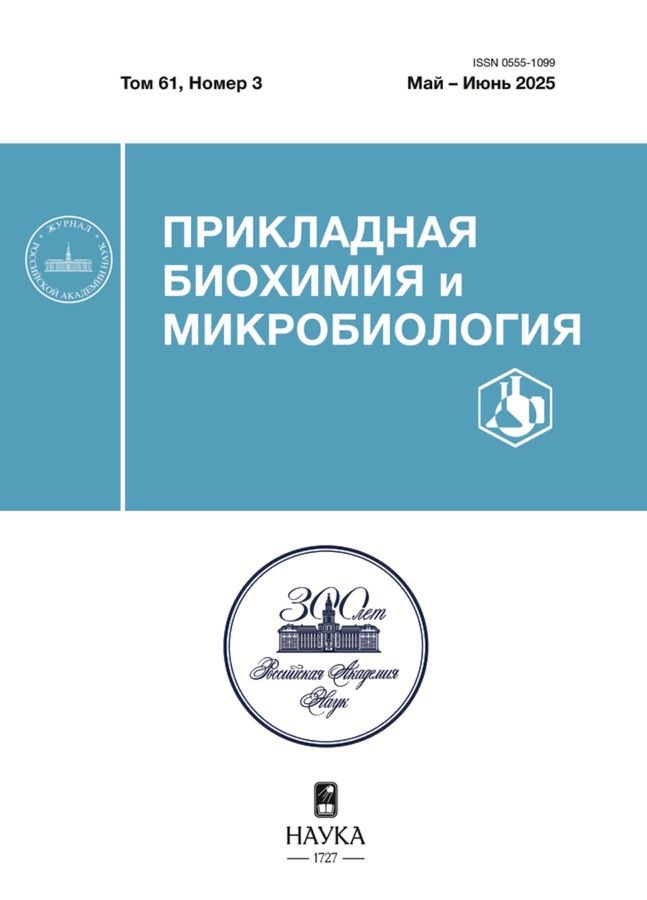Функциональные производные хитозана, растворимые в нейтральных средах — средство доставки лекарственных веществ и генетического материала: получение и свойства
- Авторы: Горшкова М.Ю.1, Григорян Э.С.1, Волкова И.Ф.1
-
Учреждения:
- Институт нефтехимического синтеза им. А. В. Топчиева Российской академии наук
- Выпуск: Том 60, № 2 (2024)
- Страницы: 134-142
- Раздел: Статьи
- URL: https://cardiosomatics.ru/0555-1099/article/view/674563
- DOI: https://doi.org/10.31857/S0555109924020028
- EDN: https://elibrary.ru/GBFIMA
- ID: 674563
Цитировать
Полный текст
Аннотация
Предложен двухстадийный метод проведения модификации хитозана, обеспечивающий контролируемое присоединение кватернизованного блока. Структура полученных продуктов изучена методами ИК-Фурье- и ЯМР-спектроскопии; растворимость охарактеризована методом турбодиметрии; кислотно-основные свойства определены методом потенциометрии. Показано, что для получения растворимых продуктов необходимо наличие ~50% кватернизованных аминогрупп. Разница в рН-чувствительности модифицированных производных с разным типом присоединения кватернизованного блока выявлена на примере их комплексов с модельным полистиролсульфонатным анионом. Продемонстрирована возможность получения на основе синтезированных производных комплексов с ДНК — полиплексов, размеры которых определялись структурой производных, стабильных в условиях близких к физиологическим. Полученные результаты могут составить основу для разработки систем доставки лекарственных средств и генетического материала.
Полный текст
Об авторах
М. Ю. Горшкова
Институт нефтехимического синтеза им. А. В. Топчиева Российской академии наук
Автор, ответственный за переписку.
Email: mgor@ps.ac.ru
Россия, 119991, Москва
Э. С. Григорян
Институт нефтехимического синтеза им. А. В. Топчиева Российской академии наук
Email: mgor@ps.ac.ru
Россия, 119991, Москва
И. Ф. Волкова
Институт нефтехимического синтеза им. А. В. Топчиева Российской академии наук
Email: mgor@ps.ac.ru
Россия, 119991, Москва
Список литературы
- Harugade A., Sherje A. P., Pethe А. // React. Func. Polym. 2023. V. 191. P. 105634. https://doi.org/10.1016/j.reactfunctpolym.2023.105634
- Verma D., Okhawilai M., Goh K. L., Thakur K. V., Senthilkumar N., Sharma M., Uyama H. // Environ. Res. 2023. V. 235. P. 116580. https://doi.org/10.1016/j.envres.2023.116580
- Горшенин Д. С., Жернов Ю. В., Кривцов Г. Г., Хаитов М. Р. // Иммунология. 2020. Т. 41. № 5. C. 470–478. https://doi.org/10.33029/0206-4952-2020-41-5-470-478
- Iqbal Y., Ahmed I., Irfan M. F., Chatha S. A. S., Zubair M., Ullah A. // Carbohyd. Polym. 2023. Р. 121318. https://doi.org/10.1016/j.carbpol.2023.121318
- Tang W., Wang J., Hou H., Li Y., Wang J., Fu J. et al. // Int. J. Biol. Macromol. 2023. V. 240. P. 124398. https://doi.org/10.1016/j.ijbiomac.2023.124398
- Горшкова М. Ю., Волкова И. Ф., Алексеева С. Г., Молоткова Н. Н., Скорикова Е. Е., Изумрудов В. А. // Высокомо-лекулярные cоединения. Сер. А. 2011. Т. 53. № 1. C. 60–69.
- Yevlampieva N. P., Gubarev A. S., Gorshkova M. Yu., Okrugin B. M., Ryumtsev E. I. // J. Polym. Res. 2015. V. 22. P. 166. https://doi.org/10.1007/s10965-015-0802-7
- Izumrudov V. A., Volkova I. F., Gorshkova M. Yu. // Eur. Polym. J. 2013. V. 49. P. 3302–3308. https://doi.org/10.1016/j.eurpolymj.2013.07.003
- Faizuloev E., Marova A., Nikonova A., Volkova I., Gorshkova M., Izumrudov V. // Carbohydr. Polym. 2012. V. 89. № 4. P. 1088–1094
- Wan A., Xu Q., Yan Sun Y., Li H. // J. Agric. Food Chem. 2013. V. 61. P. 6921–6928. https://doi.org/10.1021/jf402242e
- Gruškienė R., Deveikytė R., Makuška R. // Chemija. 2013. V. 24. № 4. P. 325–334.
- Belalia R., Grelier S., Benaissa M., Coma V. // J. Agric. Food Chem. 2008. V. 56. P. 1582. https://doi.org/10.1021/jf071717
- Dormard A., Rinaudo M., Terrassin C. // Int. J. Biol. Macromol. 1986. V. 8. P. 105–107.
- Makuska R., Gorochovceva N. // Carbohydr. Polym. 2006. V. 64. № 2. P. 319–327.
- Holappa J., Nevalainen T., Savolainen J., Soininen P., Elomaa M., Safin R., Suvanto S., Pakkanen T., Masson M., Loftsson T., Järvinen T. // Macromolecules. 2004. V. 37. № 4. P. 2784–2789.
- Lim S. H., Hudson S. M. // Carbohydr. Res. 2004. V. 339. № 2. P. 313–319.
- Olins D. E., Olins F. L., von Hippel P. H. // J. Mol. Biol. 1967. V. 24. № 2. P. 157–176. https://doi.org/10.1016/0022-2836(67)90324-5
- Cai G., Jiang H., Tu K., Wang L., Zhu K. // Macromol. Biosci. 2009. V. 9. P. 256–261. https://doi.org/10.1002/mabi.200800153
- Loubaki E., Sicsic S., Le Goffic F. // Eur. Polym. J. 1989. V. 25. P. 379–384.
- Беллами И. Новые данные по ИК-спектрам сложных молекул. М: Мир, 1971. 318 с.
- Nakanishi Von K. Infrared Absorption Spectroscopy. Tokio: Verlag Holden-Day, Inc., San Francisco und Nankodo Co. 1962.
- Леви Г., Нельсон Г. Руководство по ЯМР 13С для химиков-органиков. М.: Мир, 1975.
- Le Roy F., Jolnson, Jankowski W. G. Carbon 13C-NMR Spectra. New York; London; Sidney, Toronto: Wiley, 1972.
Дополнительные файлы


















